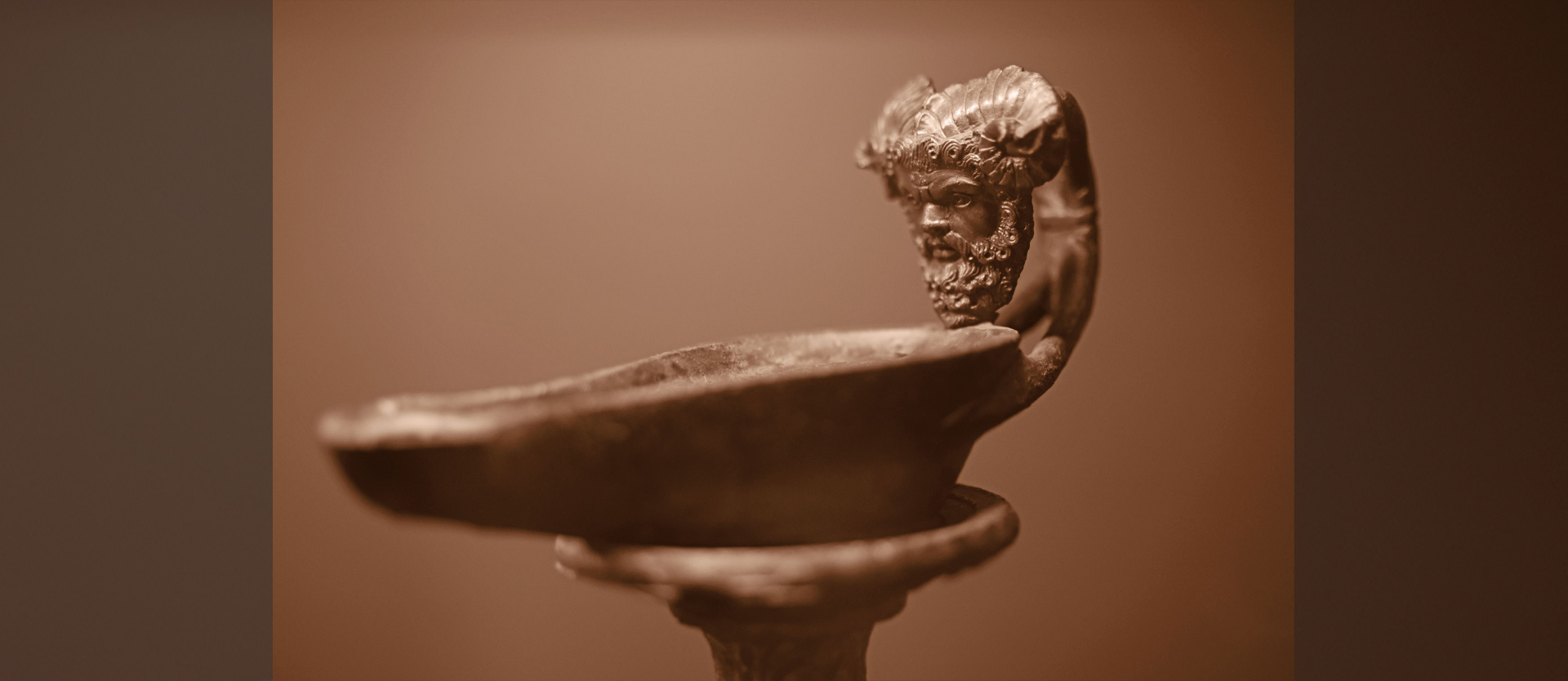
In the Roman night

What these illuminations looked like is presented in the special exhibition "New Light from Pompeii" at the Staatliche Antikensammlung in Munich. In its rooms, 180 bronze originals from the once prosperous Vesuvian cities of Pompeii, Stabiae and Herculaneum can be admired for the first time: The visitor is immersed in the Roman night. In the cleverly dimly lit exhibition rooms bathed in Pompeian gold ochre, visitors marvel at oil lamps, candelabras, lamp stands and figural lamp and torch holders. Among them are world-famous luminous sculptures, as well as newly discovered finds from the depots of the Archaeological Museum in Naples and the Archaeological Park in Pompeii. Many of them were specially restored for the Munich exhibition. As decorations on the lamps, many grimaces and mythical creatures laugh at you. Eros seems to be omnipresent, because the Romans were not stingy with erotic allusions. Sometimes the lamps take on bizarre features, for example when small figures carry huge phalli in front of them, which served as oil lamps.
Those who want to explore the nocturnal world of antiquity digitally in 3D should visit the "Virtual Triclinium" of the Pompeian local politician Julius Polybius. Here you can become a Roman slave with VR glasses. With the globular goggles on your nose and a lighter in your hand, you walk around and have to light lamps that then illuminate the dark dining room.
With their exciting Pompeii exhibition, the curators led by archaeologist Ruth Bielfeldt of the Ludwig Maximilian University of Munich have managed to focus on a surprising and hitherto rather neglected aspect of Roman life. How the Romans turned night into day on the Gulf of Naples is a pleasantly refreshing approach in the exhibition culture about the ancient world.
The exhibition is accompanied by a rich program of events. Info here:
www.antike-am-koenigsplatz.mwn.de
Exhibition:
"Neues Licht aus Pompeji",
Staatliche Antikensammlungen München
Königsplatz 1, 80333 München
until 2nd April 2023












